(This article focuses on helping kids who will be attending school physically. If your child will be in a virtual school, please see this article instead)
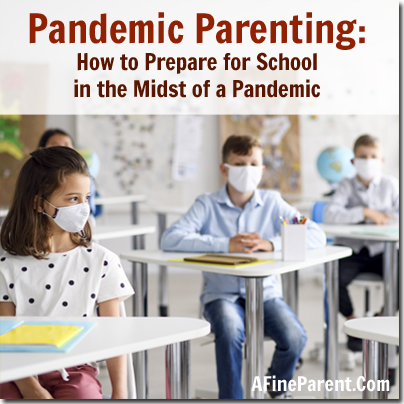 Pens. Pencils. Paper. Folders. Typically, in the heat of July and early August, teachers, parents and kids alike are browsing the store shelves, hunting for that perfect piece of classroom decor or locker accessory.
Pens. Pencils. Paper. Folders. Typically, in the heat of July and early August, teachers, parents and kids alike are browsing the store shelves, hunting for that perfect piece of classroom decor or locker accessory.
This year is different.
As a teacher and a mom of two sons, I’ve watched this summer fly by faster than any other. Our days are made of lazy mornings and warm New Jersey weather, but our peaceful retreat has been interrupted by the approach of what has officially become The Most Dreaded School Year Ever.
Even after nearly 20 years of teaching in New Jersey’s public schools, the beginning of a new school year still makes me nervous. This year, I don’t even know what I should worry about!
Should I worry about having enough hand sanitizer and PPE in my classroom, or should I buy scrubs to wear, like some of my colleagues? Should I focus on the habits of my 12 year-old son, a young man who is bright, but stopped completing assignments near the end of last year’s remote learning? Or on the needs of my 3 year-old, who has qualified for the district’s handicapped preschool program?
Pandemic parenting is hard, and it’s getting even harder as we approach the fall. As we hurtle closer to the ceremonial first day of school, major questions about our schools in the COVID-19 era have not yet been settled, including whether students will arrive at buildings on the appointed day, or pull up a chair at the dining room table to continue the virtual learning that took place during the spring.
So, in the midst of so many unknowns, the question arises: How can I prepare my students, my own kids and myself for school in the middle of a pandemic? As a parent and a teacher experiencing both sides of these challenges, here are some things I am doing that might help your family prepare, too.
School Your Child in Safety Protocols
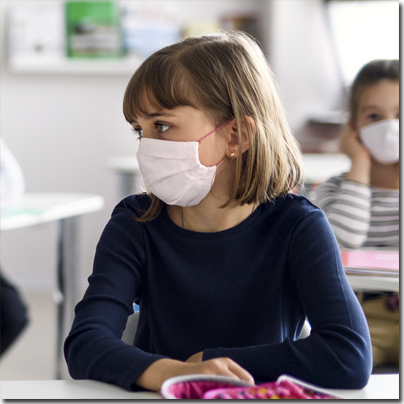 All summer, masks have been a hot topic. Whether to wear them. Who should wear them. What kind is best. Where and when they should and shouldn’t be worn.
All summer, masks have been a hot topic. Whether to wear them. Who should wear them. What kind is best. Where and when they should and shouldn’t be worn.
Wearing masks and social distancing have been the cornerstones of containing this virus, yet both seem difficult, if not impossible, for kids.
To keep everyone safe, a school building needs to have one set of rules that applies to all of its students, with limited exceptions. In fact, this kind of limit-setting actually helps kids in the long run, because it develops their ability to behave in varied social settings.
Children young and old may find social distancing even more difficult than mask-wearing. Recommendations have changed since March, but experts now believe that we should all be doing both for optimal containment.
Unfortunately, our kids have been starved for social opportunities, and they desperately want things to go back to normal. Sadly, going back to school is not likely to provide the “normal” social interactions that they crave. They won’t be lunching with friends or learning in small groups or pairs; it’s more likely that their desks will be in rows, six feet apart, all facing one way, with everyone in masks.
No doubt, following all of these rules is going to be extremely challenging for kids. Leveling with them about the guidelines can help them know what to expect, so that they can behave accordingly when they return to their classrooms.
Getting Kids to Mask Up and Stay Safe:
- Model wearing a mask consistently, in public and around non-family members.
- Keep masks clean and handle them hygienically for maximum protection.
- Build mask stamina in your child. Find one that’s comfortable, and have them practice wearing it, starting before the school year begins.
- Tell your child to ask the teacher for a “mask break” if he needs one. Some schools intend to have designated places for an individual to rest without a mask.
- Help your child understand the importance of all safety protocols, and encourage her to report any violations. This CDC Checklist may be helpful.
Be Positive
 Both the weather and the tensions have been running high lately. While we all await the final schedules and remote learning options, there are some who are demanding that school buildings stay closed until there’s a vaccine, and others who insist that it’s safe and necessary to re-open.
Both the weather and the tensions have been running high lately. While we all await the final schedules and remote learning options, there are some who are demanding that school buildings stay closed until there’s a vaccine, and others who insist that it’s safe and necessary to re-open.
Amid the debate, I look to voices of calm and candor. “Whatever happens, let’s be positive,” one of my well-respected colleagues offered. Pediatricians, psychologists and parenting writers echo her sentiments. Our kids do not need to hear all of our opinions, worries and fears.
Obviously, it can be hard to avoid talking to kids about the issue of school re-opening since it affects them the most. But when we do talk to them, it’s important to manage not just what we’re saying but also our non-verbal cues such as tone of voice and facial expression. Being mindful in this way can also help us cultivate equanimity, something we all need these days.
Positive Parenting Prescription:
- If you must disagree with an authority, keep it short. Consider using a “critique sandwich”: start with a positive comment, then share your negative comment and then conclude with a positive comment.
- Use child-friendly language and keep your own emotions in check.
- Think to yourself: how will it sound if a child repeats this opinion? Act accordingly, because they are always listening.
Practice Self-Care and Compassion
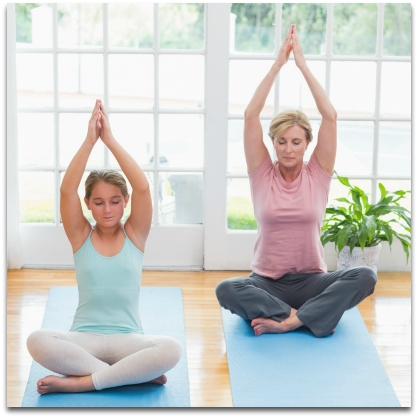 If you’re feeling anxious about the fall, you’re not alone. Truly, Americans were suffering from a pandemic of stress long before the onset of COVID-19. Now, as we look ahead to an uncertain future, we need to take care of ourselves physically and emotionally.
If you’re feeling anxious about the fall, you’re not alone. Truly, Americans were suffering from a pandemic of stress long before the onset of COVID-19. Now, as we look ahead to an uncertain future, we need to take care of ourselves physically and emotionally.
Sadly, self-care is widely considered to be a luxury. We sacrifice ourselves to the demands of our children, our jobs, our partners and our extended families, all before we take care of ourselves.
But really, that thinking needs to be reversed. The flight attendant on the airline always reminds passengers to put their own oxygen mask on before helping others, and this has become a fitting and popular metaphor for self-care.
 In truth, the same philosophy underlies much religious and spiritual practice the world over. In The Book of Joy, The Archbishop Desmond Tutu and the Dalai Lama agree that the popular philosophical principle, the Golden Rule — “treat others as you wish to be treated” — also implies that we should treat ourselves with love, and model relationships on that example.
In truth, the same philosophy underlies much religious and spiritual practice the world over. In The Book of Joy, The Archbishop Desmond Tutu and the Dalai Lama agree that the popular philosophical principle, the Golden Rule — “treat others as you wish to be treated” — also implies that we should treat ourselves with love, and model relationships on that example.
In recent years, meditation, mindfulness and yoga have gained popularity in America. Not only do these practices help cultivate inner peace, but they also reduce anxiety, decrease blood pressure, improve feelings of overall well-being and, perhaps most importantly, boost our immune systems. Taking good care of ourselves allows us to take better care of others, including our children, during this challenging time.
Just five minutes of meditation per day can yield benefits. And everyone, even the parents of young children learning at home, deserves five minute of peace per day. That means you!
Being Good to Yourself:
- Get started by trying a free, short, guided meditation online (YouTube and other similar sites have many to choose from).
- Protect your personal time. Take a walk, talk with friends, try some yoga. Combine social time with self-care, if you can, even if it means texting a friend, or attending a fitness class over Zoom.
- Focus on wellness for the entire family. Make nutrition and exercise a family priority.
- Editor’s Note: Try our 3-2-1 Mindfulness Journal to turn mindfulness into a habit.
Build Bridges
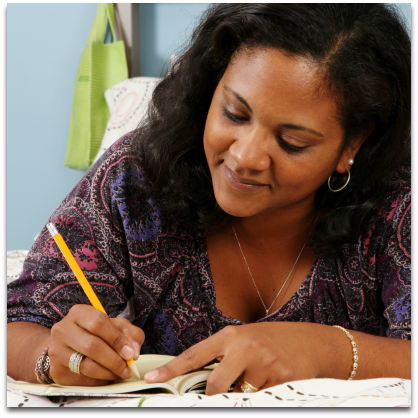 Part of practicing this kind of care and compassion is extending it to others. As schools prepare to reconvene in-person, educators are facing unforeseen challenges. Despite countless hours of work over the summer, administrators and teachers still worry that students will not receive the high-quality instruction that our families have become accustomed to.
Part of practicing this kind of care and compassion is extending it to others. As schools prepare to reconvene in-person, educators are facing unforeseen challenges. Despite countless hours of work over the summer, administrators and teachers still worry that students will not receive the high-quality instruction that our families have become accustomed to.
How can you help? This year, opportunities to volunteer for field trips, book fairs, class parties, assemblies, special programs and extra-curricular activities will be limited or non-existent. Instead, reach out to your child’s teacher and offer your support.
In the very best of times, most teachers provide supplies for their own classrooms. With tight budgets and increased needs, teachers are sure to have a list of items they are short on. Find out if your child’s teacher has a “Giving Tree” in their classroom, allowing students and parents to purchase needed supplies as they are willing and able. Some have a pet project listed on Donors Choose.
If your child’s teacher doesn’t have this kind of system, email and ask what they need. Whether it’s hand sanitizer, tissues, paper towels or wipes, I can guarantee you that not only will you earn some goodwill with the teacher, but you will also protect your child and your family from illness.
We’re All in This Together:
- Give teachers a clean slate. Regardless of the challenges your family faced during remote instruction in the spring, this is a new school year, and everyone gets the opportunity to start fresh.
- If you have concerns about your child’s progress last year, ask the teacher for help. She can assess your student and provide extra help — even virtually — to bring him to mastery.
- If you have the time and desire to volunteer, consider coordinating supply drives for classrooms. Some popular items would include hand sanitizer, wipes, tissues, extra Expo markers, books (so kids don’t have to share) and pens and pencils (so kids can borrow and keep).
Teach Your Kids How They Learn Best
 As opening day draws near, new concerns and questions arise daily. Superintendents feel like they’re playing a never-ending game of “Whack-a-Mole,” solving one problem only to see another immediately take its place. Some superintendents, like these from Vermont and New Jersey, have even taken to publishing their unresolved concerns on the Internet.
As opening day draws near, new concerns and questions arise daily. Superintendents feel like they’re playing a never-ending game of “Whack-a-Mole,” solving one problem only to see another immediately take its place. Some superintendents, like these from Vermont and New Jersey, have even taken to publishing their unresolved concerns on the Internet.
One emerging issue is staff attendance. Recent reports indicate that teachers, particularly at the high school level, are facing a high risk level for contracting COVID-19 in school buildings. Between this and teachers who need to take leave or work remotely because of medical or childcare needs, students will be seeing a lot of substitute teachers…if districts can hire them. My home district has implored parents to “consider substitute teaching for the district.” This plea suggests just how dire the situation may become.
Unfortunately, having substitutes in the classroom can result in learning loss. In order to remedy that, students need to start with the most consistent participant in their learning: themselves. Taking the work assigned by the substitute seriously is a necessary first step towards success.
Further exacerbating this problem, teachers and students are preparing to work under brand-new and wholly untested hybrid schedules, devised to reduce the number of children in buildings at any one time. Older kids, even those who are good students, might struggle to balance virtual learning with in-person sessions, finding it demanding, or confusing, or both.
This being the case, developing good learning habits will be necessary for student success. Ultimately, this is a major responsibility, but also a major opportunity, for our children, especially older children. This is a time for them to learn to account, and advocate, for themselves.
Student Empowerment:
- Prepare your child to have substitute teachers. Remind her to respect subs as if they are teachers, and hold your child accountable for the work the sub assigns.
- If you or your child discover a gap in learning from last year’s virtual classes, ask the teacher what can be done to cover the material in class, in small groups or virtually.
- Encourage your child to ask for help whenever it is needed. This will not only help him academically, but personally as well, because it will help him to build relationships with his teachers.
- Help your child, but do not do things for her. If she struggles, let her learn from the struggle.
Know Your Rights as an Employee
 Parents got an education this spring. Parents who had never been teachers before suddenly became teachers, juggling the needs of their kids, their newfound role as remote teachers and their outside employers. A career teacher myself, I have always proclaimed that I can’t teach my own kid anything, and this spring certainly gave me the opportunity to prove that.
Parents got an education this spring. Parents who had never been teachers before suddenly became teachers, juggling the needs of their kids, their newfound role as remote teachers and their outside employers. A career teacher myself, I have always proclaimed that I can’t teach my own kid anything, and this spring certainly gave me the opportunity to prove that.
Employers may or may not be so lenient this go-round. While some major employers like Google continue to allow employees to work from home, many others do not have the same option. Small business owners continue to struggle just to stay afloat, and other businesses or offices have returned to work with increased safety and social distancing measures in place. For many parents, the promise of schools re-opening lifted a huge burden, yet the possibility of another closure due to COVID still lurks.
It is always wise to know your rights as an employee, but even more so during this pandemic. State and federal governments have enacted legislation to protect employees during this time of crisis. On the federal level, the Families First Coronavirus Response Act (FFCRA), entitles some employees to two weeks or 80 hours of leave – at full pay or 2/3 of full pay – for a variety of reasons, including the need to quarantine, or to care for a child who is quarantined or whose school is closed. In addition, an emergency expansion of FMLA entitles employees to temporary paid leave of up to 10 weeks at 2/3 of regular pay. Taken in conjunction with the FFCRA, that may be up to 12 weeks of partially paid leave.
Be aware that these federal enactments expire in December of 2020. These leaves are confusing, and entitlements can vary based on an employee’s circumstances, so your best bet is to consult with a Human Resources or union representative, if you have one.
As working parents ourselves, my teacher colleagues and I are wrestling with the same difficult questions as our students’ parents. Together, we are brainstorming questions and ideas to try to prepare for the difficult path ahead.
Plan Now for Later:
- Know your rights. The legislation enacted during the spring should help protect you from losing your job or your income due to COVID-related issues. If you are worried, consider having these conversations now, before the need arises.
- Network with colleagues and neighbors. Perhaps childcare solutions can be a responsibility shared by a group.
- Interview babysitters sooner rather than later. With some colleges operating remotely, you might find that you have a better supply of young sitters in your area than before.
If Your Kid is Sick, Keep Her at Home
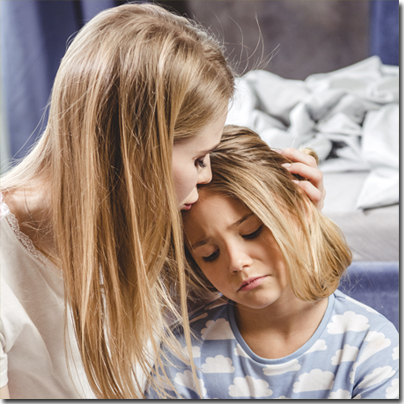 It happens every year. Kids exhibiting mild symptoms, including fever, come to school with a dose of Tylenol to ward it off. Sometimes, it’s no big deal and the child recovers fully and quickly; other times, the child goes to the nurse, the nurse calls the parent and the child goes home for the day.
It happens every year. Kids exhibiting mild symptoms, including fever, come to school with a dose of Tylenol to ward it off. Sometimes, it’s no big deal and the child recovers fully and quickly; other times, the child goes to the nurse, the nurse calls the parent and the child goes home for the day.
This disrupts the parent’s commitments, or other reason for sending the child, and potentially exposes the class to whatever ailment the child was suffering from. While this may be routine and innocuous in cold and flu season, it may not be during COVID-19. In fact, it could be life-threatening and disruptive to the class, requiring quarantine for all who have been in contact with the child, depending on the outcome of a test and the state and local guidelines.
As a working mother myself, I know that I am going to need to take more days off to stay home with my kids this year. Usually, I am already at school before my children are awake, leaving my husband with all morning responsibilities, including illness. This year, I know it will be different, and I expect to be called upon to leave school and relieve my husband quickly if either of our sons exhibits symptoms of an illness.
Will I be burning through family illness and personal days? Probably. Is it worth it? To protect my community from an outbreak, definitely. More than ever, we need sick kids to stay home.
Keeping Kids in Quarantine:
- Plan ahead for how you’ll handle it if your kid exhibits some symptoms of illness and needs to stay home.
- If your child is home, ask the teacher what your child can work on. If your child is home for a 14-day quarantine, the school may allow you to enroll as a fully remote student.
- Some districts have support for students even if they are out of school for illness. Your district may offer Chromebooks, home WiFi, boxed or bagged lunches and more.
Back-to-school time is usually exciting for parents and teachers, as well as kids. This year, we face pandemic parenting and all the uncertainty that brings, making the start of school a bit nerve-racking as well. But one thing is certain: regardless of when we re-open school buildings, things will likely not go back to “normal” any time soon. Patience will be required to navigate this situation until it reaches a satisfactory conclusion for all.
While I’m not thrilled that masks and hand sanitizer have become the latest “must-have” accessories, I just want what’s best for my kids — as a parent and as a teacher. Since we don’t always know for sure what is best right now, the best course of action is to invite kids to navigate that uncertainty with you. By prioritizing safety, positivity and learning, you might find this as an opportunity to strengthen relationships and develop new strengths and skills, for yourself and for your child.
2-Minute Action Plan for Fine Parents
Our kids are the ones going back to school, so their opinions count, but they may need us to guide them so that they know what to expect. Prepare to discuss the situation with your child, and remember that it is his turn to talk, and your turn to listen.
- What are your child’s expectations of this school year? Depending on your child’s age, how realistic are those expectations?
- How can you model appropriate behaviors to prepare your child for the back-to-school experience? What experiences has she had during the pandemic to prepare for appropriate social distancing, mask-wearing and hand-washing? What experiences can you plan so that she may safely continue to practice these behaviors?
The Ongoing Action Plan for Fine Parents
The COVID-19 pandemic has left Americans with more questions than answers. New information is released every day, and even the most dedicated parent or teacher cannot possibly keep up with all of it. Continuing to educate yourself will be key to parenting throughout the rest of this pandemic.
Consult with your doctor about any specific questions regarding your child and family’s health and well-being. No advice can substitute for the knowledge and insight of a physician who knows your family’s history and circumstances.
Remember that your child’s school is a community resource. Administrators have been working closely with local officials, including the health department, to implement safety procedures. If you have questions about your school’s protocols, reach out to administrators or board members via email or at the next meeting of the Board of Education.
If you’re worried about worrying, don’t worry: you’re not alone. The school year ahead may be unprecedented, but it won’t be impossible. And every time your kid learns something new or speaks glowingly of his teacher, you just might forget about the pandemic entirely.
This year was really a bit spoiled by the pandemic. Children are not ready to recover quickly and start learning. Now the problem is that children forget the main thing. This is the correct spelling and not only grammar. When I studied last year, I used the service of my name. There are many topics and subtopics. Great opportunities and qualified writers. I consider it one of the best services I have encountered. I sincerely recommend readers to pay attention to this.
“The Most Dreaded School Year Ever” – the best description of this time.
My oldest son is learning remotely and has been at home since September. The younger children are attending school. And it can be worrying for each of them. Will the older child learn enough remotely? Will my children and those around them be safe at school? There is so much to worry about. I think every parent is going through this right now.
This situation has made our family stronger and the relationship with my kids has surprisingly improved. We find understanding and they are not cranky and they are really responsible about going to school (well most of the time). There is still so much that I can’t control and anticipate. But it reassures me that we are doing the best we can.
Thank you! Your site and your articles are a great find for me. It calms me down and reassures me that I am on the right path.
Both my kids have started back to school. My daughter goes to public school and hers is virtual which I think is safest since they can’t limit class sizes. My son is hybrid because his school is private and they have smaller classes with more resources. I am curious to see if it will last or have to go virtual as well. Such a different back to school this year!!
I did skim, but is this article assuming most kids are going back to school buildings? Is that what the majority of the country is doing? Our county, and much of our state, is doing 100% virtual until late January at least. I was hoping this article would help me with tips on getting a teen, and myself, through that!
Hi Elizabeth! Thanks for reaching out. I think it’s great that your county is all-virtual. Here in New Jersey, New York, and Connecticut, that is not the case. I wrote this from the broader framework of getting ready for a school year; I’m working on a follow-up for getting ready for a virtual school year. Thank you!